The thick, soft mist on the Wirral made Landican Cemetery look very dream-like before the sun evaporated it.
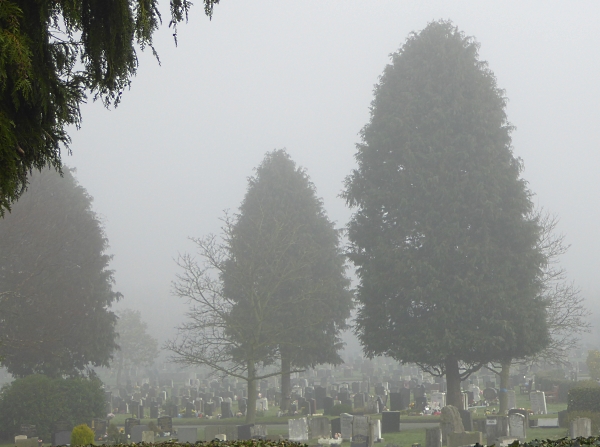
The recent unseasonably warm weather has made the Spring suddenly gallop ahead. Blue Tits were being contrary by prospecting the “wrong” nest boxes, ones that weren’t really designed for them. One was in a three-apartment Sparrow box near the entrance and another was carrying nesting material to an open-fronted Robin box.
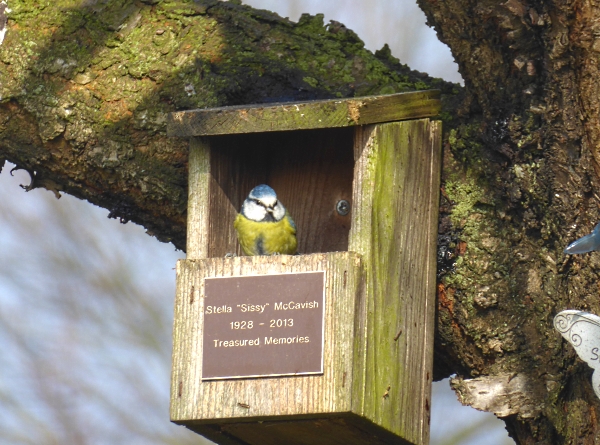
In some rough ground off the eastern border was a Goat Willow with the first pussy willow flower of the year, breaking out its yellow pollen.
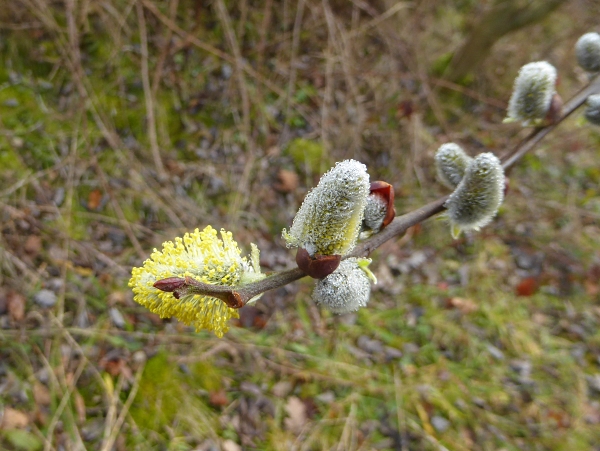
The cemetery was opened in 1935 and the plantings of architectural evergreen trees like Lawson, Leyland and Monterey Cypresses, now look as the planners envisaged. The Golden Irish Yews (which are all-male clones), are covered with ripening pollen sacs. Many of the more recent plantings of young bare deciduous trees still have their identifying labels, so we found a Sorbus hybrida ‘Gibsii’, which is a kind of Rowan with non-pinnate leaves, a Salix pentandra, which is Bay Willow and also a couple of Crab Apples ‘John Downie’, which will have pale pink blossom and red and yellow fruit. At the corners of the Commonwealth War Graves plot are two young trees with the early signs of pink blossom. We have noticed them before but haven’t been able to identify them. Today we found a labelled tree elsewhere with the same buds and bark, so now we know they are Pyrus calleryana ‘Chanticleer’, a kind of ornamental flowering Pear, native to China and Vietnam, but planted widely in the USA and becoming popular in Europe
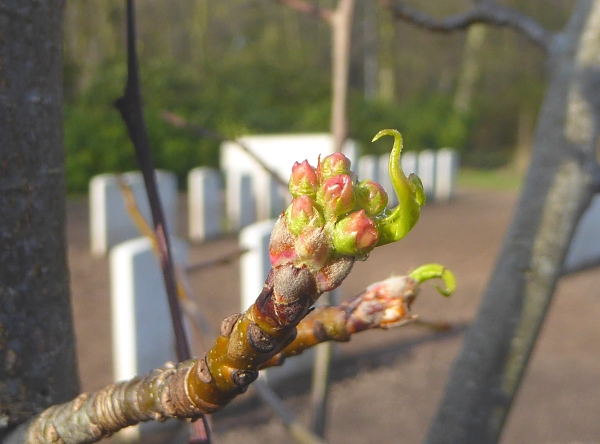
Along the edges of the cemetery were more natural or native trees, including Silver Birch and Lombardy Poplar, and some of the less-modern planting included White Willow with its orangey-red twigs, Hazel with its yellow catkins and Italian Alders with their dramatic long purplish catkins.

For the last week or so I have been noticing small trees breaking into very early white blossom and there were two of them in Landican. I think it’s Cherry Plum Prunus cerasifera. It usually comes out about two weeks before the Blackthorn, which was once said to be the earliest spring blossom. But this definitely isn’t Blackthorn – the flowers are on small garden and roadside trees, not on hedgerow shrubs with black bark and thorns!
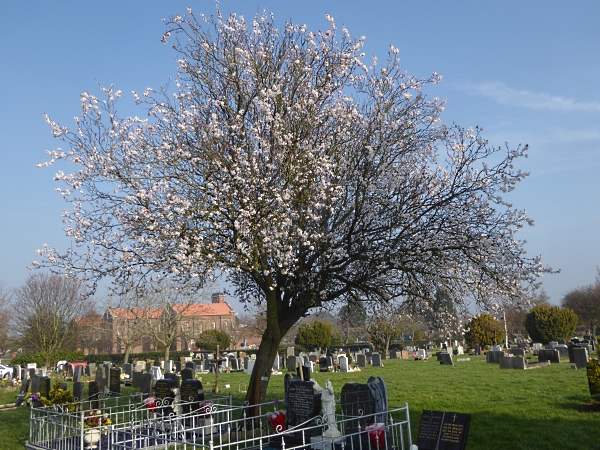
There weren’t many birds about, just a Song Thrush on a path, a Chaffinch, a couple of Blackbirds, several Magpies and a calling Greenfinch, which we couldn’t see. There were plenty of fresh Molehills, and we always hope for Hares here, but we didn’t have any luck today. After lunch we crossed the road to Arrowe Park and strolled past its display of Crocuses under the Beech trees.
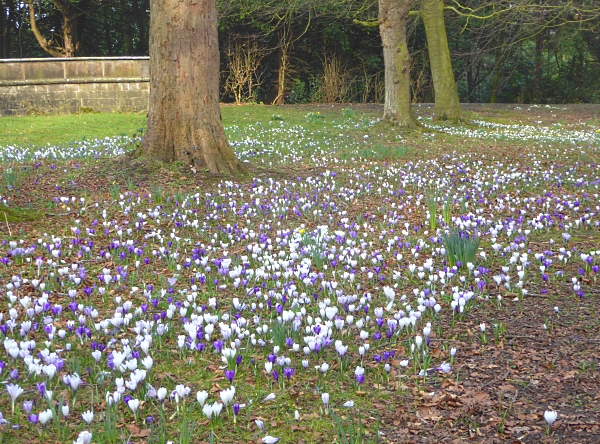
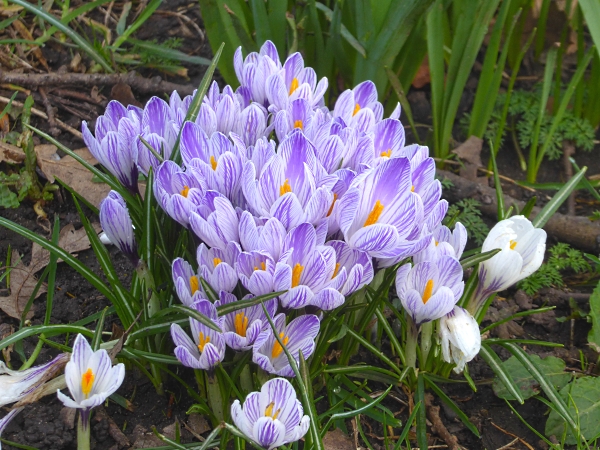
A Buzzard flew past, just above the Beech tops. The Common Limes in the park have been allowed to keep their twiggy bases (the ones on the streets near me are always “tidied up” by Sefton Council), and they provide wonderful dense thickets for small creatures to live in. For our tree list we also ticked Cedar of Lebanon, Atlas Cedar and Scots Pine, then went to look at the mystery trees near the tennis courts which we think might be Smooth-leaved Elm. Interestingly they were covered with pinkish flowery tufts, breaking out from brown shiny bud scales. Both the bark and flowers look like the photos of English Elm in Roger Phillips’s “Trees in Britain”, but the glossy leaves we saw last year definitely weren’t that species. So is it some kind of hybrid?
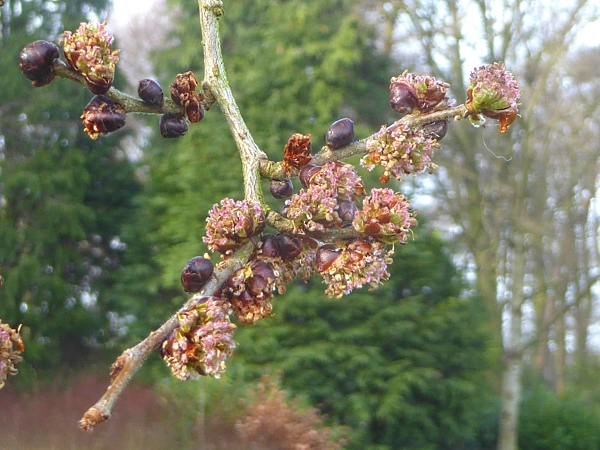
Public transport details: Bus 472 from Sir Thomas Street at 10.13, arriving Arrowe Park Road / Landican Cemetery at 10.45. Returned on the 471 bus from Woodchurch Road / Church Lane at 2.29, arriving Liverpool 2.55.
